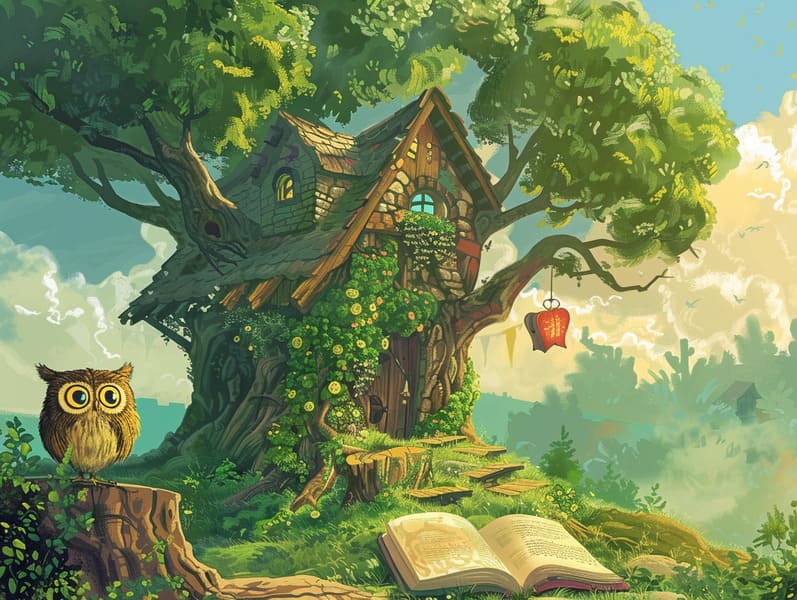
Historical fairy tales have long histories. These stories have been narrated from one generation to the next well before they were ever inscribed. They came from a variety of civilizations, including Eastern traditions. They were initially conveyed among mature audiences, often carrying themes and messages related to the societal norms and beliefs of the time.
The renowned Brothers Grimm, the two Grimm brothers, were among the first to compile and publish many of these beloved stories. Their published works, "Grimm's Story Collection," included classics like "Ashenputtel," "Hansel and Grethel," and "Snow White," which have since become mainstays in the world of iconic fairy tales. Similarly, Hans Andersen's enchanting stories, such as "The Sea Maid," and "The Duckling that Could," have floated into hearts worldwide, securing their place in the pantheon of beloved fairy tales.
Despite their age, traditional fairy tales remain as significant as ever, especially as children's night stories. These charming stories are now available in many formats, including gorgeously illustrated books, delightful animations, and online storybooks.
Their ongoing significance can be connected to several fascinating points:
Crucial Morals: Classic fairy tales often convey important moral lessons. Tales like "The Boy Who Cried Wolf" teach the virtue of truth, while "The Race of the Tortoise and the Hare" point out the qualities of steadfastness and humility. These stories offer young readers clear distinctions between good and bad, shaping their moral compass in a mild yet impactful way.
Compassion and Knowledge: Classic fairy tales frequently include heroes facing obstacles and hardships, urging audiences to identify with their struggles and support their triumphs. For instance, "Beauty and the Beast" teaches us the virtue of valuing inner qualities to know the true nature of a soul, nurturing warmth and comprehension.
Cultural Understanding: Many ancient fairy tales are rooted in the cultural contexts from which they emerged. Reading these tales can provide delightful insights into different cultures, fostering a sense of world respect and perception.
Imagination and Creativity: The fanciful elements in timeless fairy tales—fairy godmothers—engender children’s fantastical thinking. These fairy tales take readers to enchanted realms, stimulating fantasy-filled thoughts and a sense of amazement that endures a lifetime.
Classic fairy tales are not only fantastical but also illuminating. They act as mesmerizing tools in fostering various brain and heart skills in children. When fairy tales are voiced, they foster language skills by offering new lexicon and elaborate sentence structures. This practice also advances hearing abilities and attention span, as children concentrate deeply, looking forward to see what happens next.
Furthermore, deliberating the themes and characters of traditional fairy tales can promote reasoning skills and thought processes. The young learn to notice patterns, guess what will happen, and realize cause and effect. These discussions also ease little ones convey their thoughts and feelings, enhancing their emotional intelligence.
In today’s cyber age, the existence of free fairy tales online has made these stories more acquirable than ever. Online resources and mobile apps share huge assortments of timeless fairy tales that can be experienced or listened on anytime, anywhere. Fairy tales voiced are particularly common, giving an immersive method for kids to immerse in these entrancing tales. Read-aloud stories and read-out-loud videos guide characters and settings to life, often enhanced by delightful soundtracks and musical scores that enhance the story adventure.
The persistent attraction of timeless fairy tales lies in their ability to evolve to the present while keeping their core values. Contemporary takes of these fairy tales often introduce more representative characters and modern settings, making them familiar to today’s audience. However, the essential messages of bravery, empathy, and justice remain unchanged, continuing to touch audiences of all ages.
Ancient fairy tales also offer a sense of familiarity and understanding. They extend a orderly narrative with a distinct beginning, middle, and end, often wrapping up with the wrap-up of conflicts and the triumph of justice over injustice. This consistency can be easing for little ones, affording a sense of solidity in an inconstant world.
Classic fairy tales continue to entrance and guide new generations, maintaining their charm and significance in modern society. As children's bedtime stories, they grant access to a perfect blend of fantasy and learning, boosting moral values, empathy, and creativity. The prevalence of online storybooks and the well-received status of fairy tales recited confirm that these timeless tales remain reachable to new generations.
By guarding and sharing these narratives, we continue to cherish the rich tapestry of fantasy and cultural heritage. Whether you are delving into a richly illustrated book, viewing a online library, or playing an read-aloud story, the elegance of Grimm's fairy tales is always within reach. These fairy tales remind us of the unchanging presence of fairy tales and its ability to popular fairy tales with morals draw us together across centuries and lands.
Whether you are reading a colorful picture book, experiencing a cyber library, or listening to an sound book, the allure of timeless fairy tales is always within reach.
These stories convey of the eternal essence of tales and its ability to tie us across time and space, establishing a link that fascinates and enlightens alike.